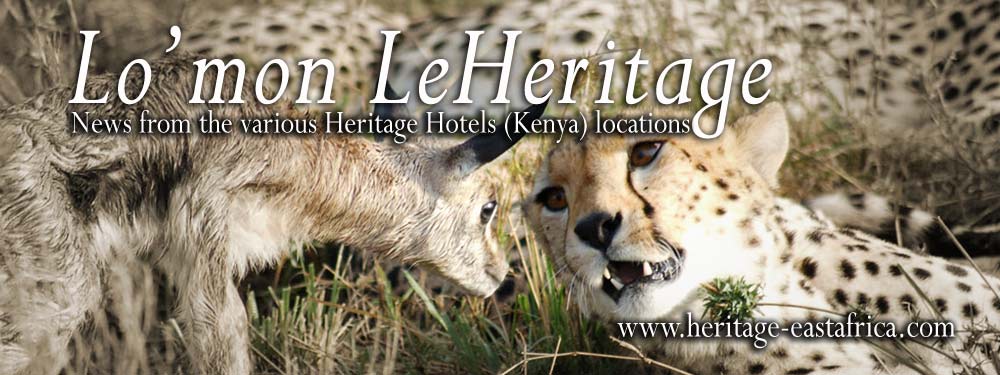Just as we had expected, the wildebeest began trickling back into the Serengeti earlier this month, leaving only a handful of herds on the Kenyan side of the border. Looking around as you drive across the Mara, this is hardly surprising: most of the plains are now almost devoid of grass. A combination of poor rains and overgrazing has meant little grass on this side of the border, and encouraged the herds to continue their great march south.
The wildebeest will now be away from the Mara until next June at the earliest, when the long rains will once again have coated the plains in lush new grass. In the meantime, the Big Cats and our other famous predators will have to devise new and smarter means of tracking down prey from their thoroughly depleted menu. They will also have to go for longer between meals, although they have proved themselves easily adaptable to this challenge. Once again, Nature will bring its ‘survival’ processes to bear, for it is only the fittest predators that will survive into the next season – ensuring the passage of the strongest genes to the next generation...
Predators
Over the last fortnight, the Mara cats have been having their last easy meals before the final migrating animals leave. Many wildebeest and zebra skeletons still litter the plains in evidence of the last season of plenty. From now on, the lion prides will become more mobile in their search for food, particularly those with young cubs. In recent days, the Ridge pride has been roaming around the southern base of Rhino Ridge, Mara Intrepids and the ‘Double Crossing’ area. One female has four-month-old cubs in tow, while a second has a one-month-old litter.
Bella, our female leopard star, is still together with her cub, and the pair continue to patrol their usual territory along the Talek River - much to the delight of Intrepids guests. Kike, our female cheetah star, is still around and looking ever more pregnant. There is also a second cheetah on the Paradise Plains with three very small cubs, which have provided our guests with record sightings this season.
Migration%20Map%2026-11-05%20Issue%2013.jpg
28 November, 2005
03 November, 2005
News from the Maasai Mara, Kenya Wednesday 2nd November 2005
Defying time and tradition, huge herds of wildebeest are still to be found in the northern Mara, where Kenya’s most celebrated visitors have continued to enjoy a busy ‘second migration’. With the rest of the Mara left largely bare of grass from the first migration in July/August, the northern area was spared – providing a handy grazing reserve for the wildebeest on their second run through. Over the past week, most of the herds have been congregating in the northern part of the ‘Mara Triangle’ near Oloololo Gate and the Olpunyata Plains. To the east, there are still some herds around Rhino Ridge, Paradise Plains and Musiara, while sporadic herds can also be seen in transit between the Talek River and Roan Hill.
Earlier this week, our visitors were treated to several mass river crossings at the Paradise point, with thousands of animals passing west into the Triangle in what is believed to be the first sign of a mass exodus. Although river levels are normal, the stampeding animals have left behind a lot of casualties, providing a feast for the few crocodiles that still have an appetite left over from August. There was a moment of drama when the river current swept a handful of wildebeests towards a pod of hippos, causing considerable consternation (but no casualties) among both parties!
Predators
With another season of plenty upon them, all of the big cats in our game viewing territory have been having their fill a second time over. The Ridge pride of lions recently killed 10 wildebeest near Mara Intrepids’ airstrip over two nights – a record for our area. The ever opportunistic hyenas and vultures also had a field day, giving rise to several fights between the lions and hyenas. Cheetah sightings have also been good, with several gazelle fawns falling easy prey to these fleet-footed cats. Bella and Chui the leopards have been very active, placing themselves strategically along the Talek River to ambush crossing animals. We have also witnessed a couple of daytime hunts, which is a rarity among these usually nocturnal cats.
Migration%20Map%202-11-05%20Issue%2012.jpg
Earlier this week, our visitors were treated to several mass river crossings at the Paradise point, with thousands of animals passing west into the Triangle in what is believed to be the first sign of a mass exodus. Although river levels are normal, the stampeding animals have left behind a lot of casualties, providing a feast for the few crocodiles that still have an appetite left over from August. There was a moment of drama when the river current swept a handful of wildebeests towards a pod of hippos, causing considerable consternation (but no casualties) among both parties!
Predators
With another season of plenty upon them, all of the big cats in our game viewing territory have been having their fill a second time over. The Ridge pride of lions recently killed 10 wildebeest near Mara Intrepids’ airstrip over two nights – a record for our area. The ever opportunistic hyenas and vultures also had a field day, giving rise to several fights between the lions and hyenas. Cheetah sightings have also been good, with several gazelle fawns falling easy prey to these fleet-footed cats. Bella and Chui the leopards have been very active, placing themselves strategically along the Talek River to ambush crossing animals. We have also witnessed a couple of daytime hunts, which is a rarity among these usually nocturnal cats.
Migration%20Map%202-11-05%20Issue%2012.jpg
Subscribe to:
Posts (Atom)
